Fatal Nuneaton rail crash remembered on anniversary
- Published
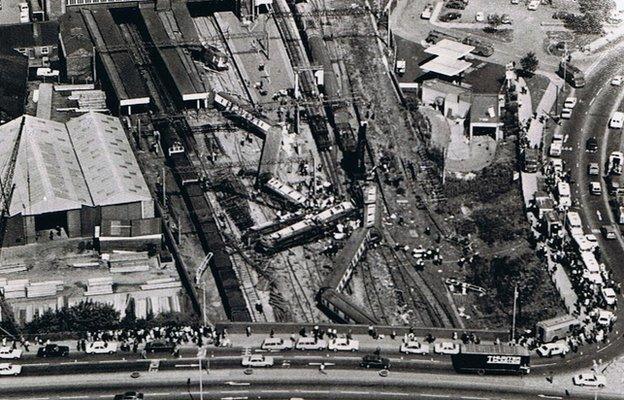
On 6 June 1975 the overnight sleeper service from Euston to Glasgow was running late.
The driver, an experienced railwayman, tried to make up for lost time. Signal boxes were clear and the train was travelling safely at its authorised speed.
But approaching the station at Nuneaton, Warwickshire, it all changed. And six people were killed.

The driver failed to remember instructions he had been given about a temporary stretch of track with a speed limit of 20mph.
Added to this was a faulty warning sign, meaning none of the three lights was working.

A Department for Transport report found that the train burst the track and continued forward, damaging the line as it went. Coaches slewed sideways for a distance of 340 yards (300m).
The front carriage finally came to rest with its front end on top of the platform and in contact with the platform awning.
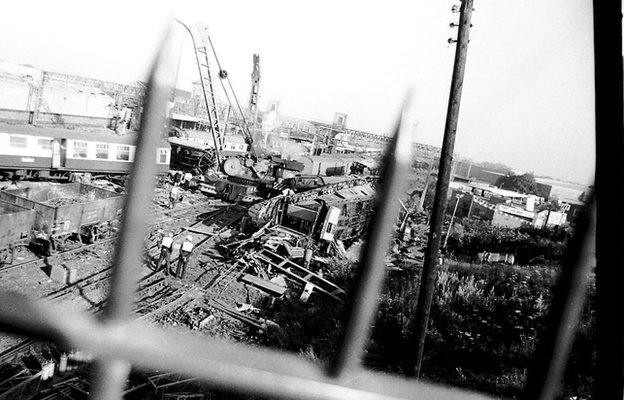
Behind it, all but the last carriage left the rails, where they overturned, got crushed and piled up.
Most of the 38 casualties were travelling in the front half of the train.
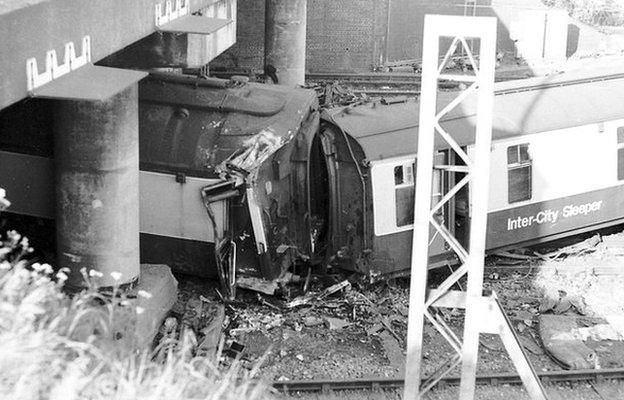
All the fatal injuries were to passengers and staff in the third, fourth, fifth, and sixth coaches, these being the most heavily damaged.
Nuneaton historian Peter Lee researched the crash and produced a short film, external of the aftermath.
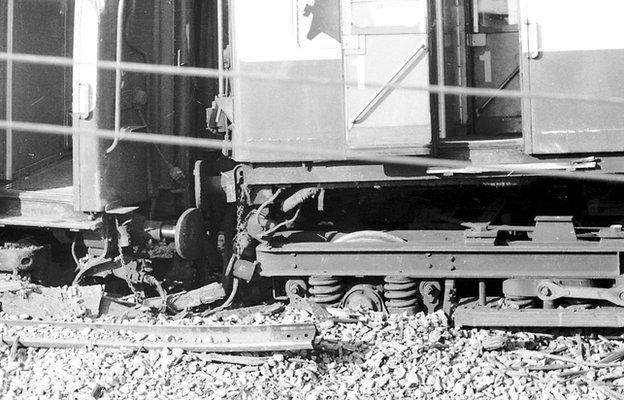
He said: "I have spoken to various railwaymen on duty that night including the driver of the diesel freight train who was trundling through number one platform at Nuneaton at a very slow speed, minding his own business, when all of a sudden this lot burst all around him".
"There was a mighty horrible crash, screeching of breaking metal and the electric locos, overhead catenaries, wiring, coaches, ballast and bits of metal were flying about in all directions."

He added: "He never got over the shock, and I think he suffers nightmares from the trauma of the event even to this day.
"He was only a young man at the time. He told me it helped to end his railway career."

The inquiry concluded the primary cause of the accident was excess speed, with a secondary factor of inadequate signage.
The driver appeared at Birmingham Crown Court on 9 June 1976 to answer six charges of manslaughter.
After a three-day trial he was found not guilty and discharged.
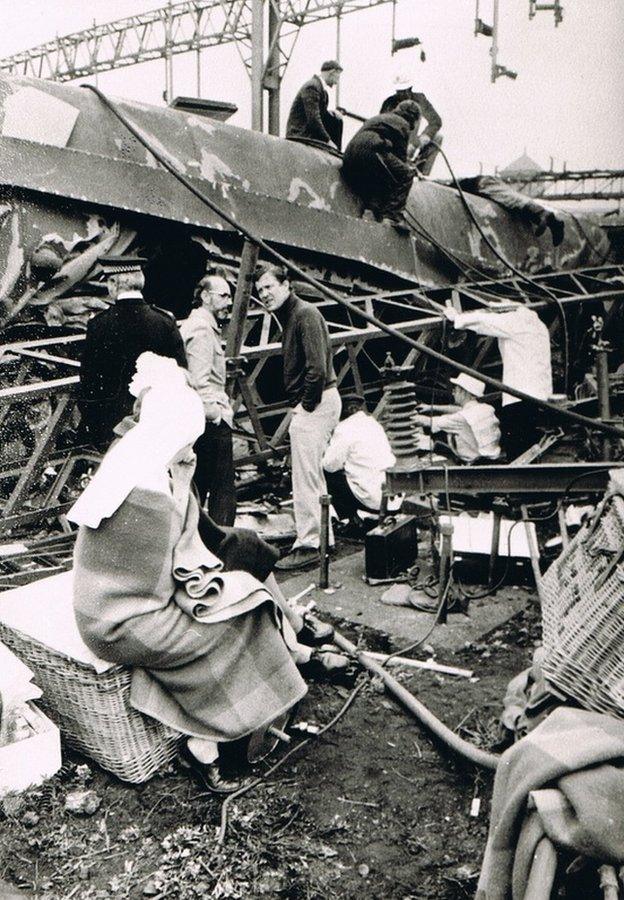
- Published28 May 2014
